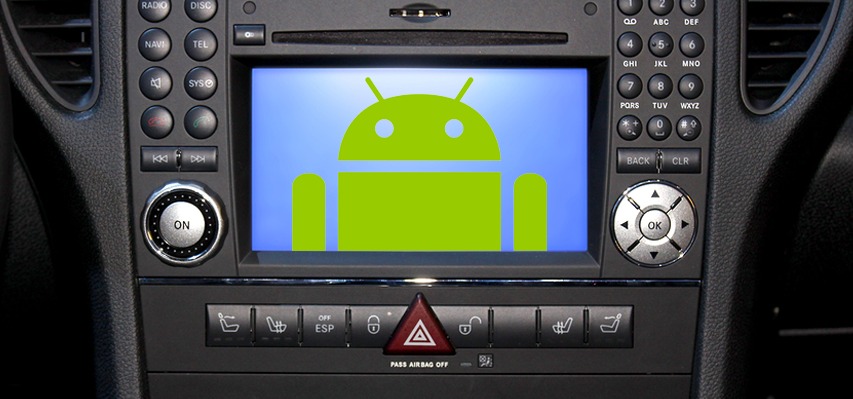Android Auto is Google’s connected car platform that was launched a few years ago. It later made its way into the smartphone ecosystem with the Android app. When Google recently announced that it would implement Android in future models of Audi and Volvo, everyone naturally assumed that it was going to be Android Auto powering the on-board infotainment systems in these vehicles. But Google appears to be taking an entirely different direction, and calling it Embedded Android, which was essentially designed for embedded systems.
During the demos earlier today at Google I/O 2017, viewers were given a first-hand look at how this works. Rather than merely implementing Android Auto, they’ve actually ripped the in-house infotainment system at the root and replaced it with Embedded Android, a custom version of the Android OS that we’re more familiar with.
Android Auto, to be clear, is not the same as Embedded Android. The Android Auto that is available on a lot of car models today is merely a technology that project’s a smartphone app’s capabilities to an onboard display either wirelessly or via USB. Yes, it does have some deep functionality integrated with the car’s own capabilities, like being able to summon Google Assistant with your voice via the steering wheel controls, for example. But in the end, it’s the Android Auto app on your smartphone that’s orchestrating the whole performance.
Embedded Android goes far deeper, sitting on top of the car’s internal system and working independently of a smartphone being connected to the car. With this type of setup, carmakers can better define the user experience. In the Audi demo, it was seen as a colum of shortcut icons for quick access, and then the main part of the screen being occupied by apps for navigation, multimedia, weather and so on. There’s also a choice of widgets for each app with its own core home screen.
In short, the difference between Android Auto and Embedded Android is that there’s no need to switch UIs because the automaker defines what UI is presented to the user. But there’s also another, massive advantage for carmakers. Embedded Android doesn’t need third-party apps to be developed because it can tap into that entire repository of Android apps called Google Play Store.
Think of the entire car as an extension of an Android smartphone. You can download the same apps, tweak settings the same way, customize your “device” any way you choose and so on. Google says that carmakers will be able to set restrictions on what apps can be accessed, but we don’t foresee any major problems for the future. There’s no need for a carmaker to block any apps from Play Store, possibly unless it’s a question of branding.
One of the safety features built into this setup is that the main digital dashboard, the Virtual Cockpit display right behind the steering wheel – gets its own custom, real-time OS. Obviously, if the Embedded Android is running some intensive tasks, you don’t want your speedometer freezing up on you. However, that dedicated OS will “talk” to Embedded Android and pass on key information that can be integrated with other display elements. It works the same way if the car has a head-up display as well.
For developers, as long as their apps comply with Android Auto requirements, there’s no need to make any changes for Embedded Android.
There are several benefits for car users and car makers alike: access to a much wider choice of apps, a more brand-friendly UI that carmakers like Audi and Volvo can define, more frequent updates for security and features, and so on.
Google seems to be doing all the heavy lifting with Embedded Android, but they’re going to be the biggest beneficiaries in the end. After thoroughly dominating the smartphone market with their mobile OS, they are now after the auto market with an attractive offer for any carmaker that doesn’t want the hassle of handling, maintaining, updating and deploying version after version of their home-brewed OS.
Thanks for visiting! Would you do us a favor? If you think it’s worth a few seconds, please like our Facebook page and follow us on Twitter. It would mean a lot to us. Thank you.
Source: SlashGear



